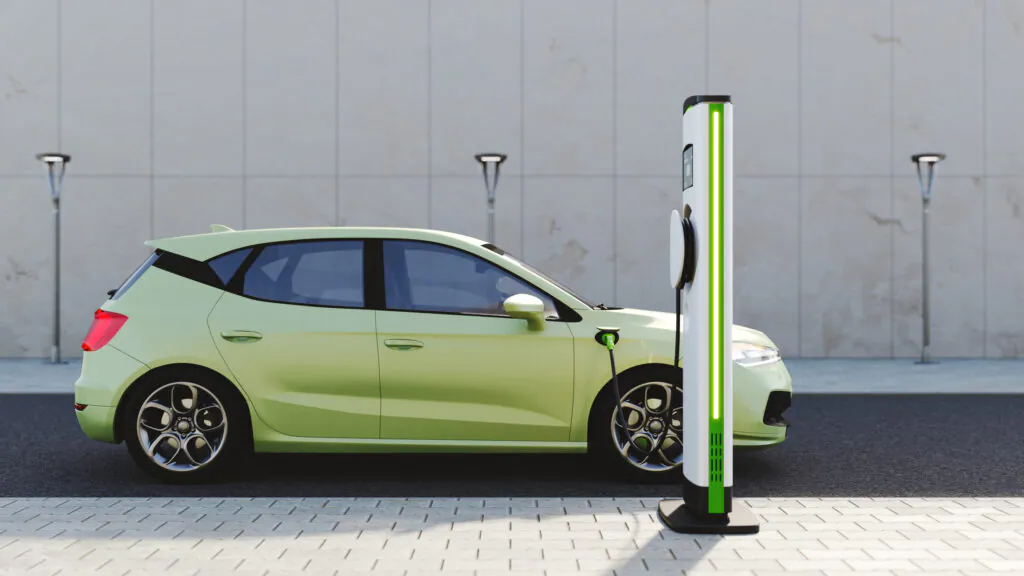Introduction
Electric Vehicles (EVs) are rapidly transforming the automotive industry, promising a future of cleaner, more efficient transportation. The EV market has seen significant growth in recent years, with major automakers like Tesla, Nissan, and BMW leading the charge. Sales of EVs have surged, driven by increasing consumer awareness and government incentives. In 2023, global EV sales reached a record high, accounting for nearly 10% of all new car sales.

Environmental Impact
EVs have a significant positive impact on the environment, primarily through the reduction of greenhouse gas emissions. Unlike internal combustion engine vehicles, EVs produce no tailpipe emissions, which means they do not emit pollutants such as Carbon Dioxide (CO2), Nitrogen Oxides (NOx), and Particulate Matter (PM) during operation. This reduction in emissions is crucial for improving air quality, particularly in urban areas where vehicle emissions are a major source of pollution. Additionally, even when accounting for the emissions from electricity generation used to charge EVs, they typically have a smaller carbon footprint compared to gasoline-powered vehicles.
The environmental benefits of EVs extend beyond their operational phase. Over their entire lifecycle, including manufacturing, use, and disposal, EVs generally produce fewer greenhouse gases than traditional vehicles. Although the production of EV batteries can be energy-intensive and generate higher emissions initially, the overall emissions are offset by the lower emissions during the vehicle’s use phase. Advances in battery recycling and the use of renewable energy sources for electricity generation further enhance the environmental benefits of EVs.
However, there are also environmental challenges associated with EVs. The extraction of raw materials for batteries, such as lithium, cobalt, and nickel, can have significant environmental and social impacts. Mining activities can lead to habitat destruction, water pollution, and human rights issues. Efforts are being made to develop more sustainable mining practices and to increase the recycling of battery materials to mitigate these impacts. As the technology and infrastructure for EVs continue to evolve, it is essential to address these challenges to maximize the environmental benefits of EVs.
Technological Advancements
Solid-State and Carbon-ion Batteries
Solid-state batteries are a promising advancement in EV technology. Toyota has been at the forefront, developing a solid-state battery that promises a range of up to 745 miles on a single charge. Similarly, Mercedes-Benz is working on solid-state batteries that could offer over 600 miles of range. These batteries not only provide higher energy density but also improve safety and reduce charging times significantly.
Carbon-ion batteries promise to revolutionize EVs with higher energy density, enabling longer ranges, and significantly faster charging times, reducing downtime. They offer improved lifecycle and enhanced safety, being less prone to overheating. Environmentally, they use sustainable materials, reducing reliance on rare metals. Companies like NAWA Technologies are leading the way, developing batteries that charge to 80% in just five minutes. These advancements make EVs more efficient, reliable, and eco-friendly, accelerating the shift to sustainable transportation.
Fast-Charging Networks and Wireless Charging Technology
Fast-charging networks are expanding rapidly. Tesla’s Supercharger network is a prime example, offering fast-charging capabilities across the globe. Additionally, Electreon is pioneering wireless charging technology with projects like the wireless electric road in Detroit, which allows EVs to charge as they drive. This technology uses electromagnetic coils embedded in the road to transfer energy to the vehicle, making charging more convenient and reducing range anxiety.
Vehicle-To-Grid (V2G) Technology
V2G technology is revolutionizing how we think about energy storage and distribution. Nissan has been a leader in this area with its Nissan Leaf, which can return electricity to the grid, helping to balance supply and demand. This technology not only supports grid stability but also offers financial incentives to EV owners who can sell excess energy back to the grid.
Autonomous Driving Features
Autonomous driving features are becoming more integrated into EVs. Tesla’s Autopilot and Full Self-Driving (FSD) capabilities are well-known examples, offering advanced driver assistance and autonomous driving features. Other companies like Waymo and Cruise are also making significant strides in autonomous vehicle technology, with extensive real-world testing and deployments.
Lightweight Materials
The use of lightweight materials is crucial for improving EV efficiency. BMW has utilized carbon fiber-reinforced polymers (CFRP) in the body of its i3 EV to offset the weight of its battery pack. Similarly, Tesla uses aluminum extensively in its vehicle bodies to reduce weight and improve performance.
Smart Grids Integrating Renewable Energy Sources with EV Charging Stations
Smart grids are essential for integrating renewable energy sources with EV charging infrastructure. NREL (National Renewable Energy Laboratory) is working on smart-charge management strategies that optimize the use of renewable energy for EV charging. These strategies help in balancing the grid, reducing peak demand, and ensuring a reliable power supply.
Government Policies and Incentives
Governments worldwide are implementing policies to promote EV adoption. Subsidies, tax incentives, and rebates are making EVs more affordable for consumers. Regulations are being introduced to phase out internal combustion engine vehicles, with some countries setting ambitious targets for 100% EV sales by 2030 or 2040.
-
United States
The Biden administration has set targets to boost EV adoption. EPA rules aim for 60% of new car sales to be electric by 2030 and 67% by 2032. California’s “Advanced Clean Cars II” regulation targets 68% of new car sales to be electric by 2030, 82% by 2032, and aims to ban internal combustion engine vehicle sales by 2035. Significant investments are being made in EV infrastructure, manufacturing, and consumer incentives through the “Build Back Better” agenda. -
European Union
The EU has enacted strict CO2 emission standards for cars, pushing automakers toward EVs. The European Green Deal sets a 55% reduction in CO2 emissions by 2030 compared to 2021, and the Fit for 55 package proposes ending new internal combustion car sales by 2035. These rules, paired with an ambitious climate plan, will drastically increase EV adoption and reshape Europe’s auto industry by the next decade. -
China
China has implemented aggressive EV policies, with New Energy Vehicles (NEVs) expected to make up 20% of all new car sales by 2025. China’s comprehensive plan includes subsidies, tax incentives, and charging infrastructure investments. The country is investing heavily to dominate the EV market and stay at the forefront of EV production and technology, with government backing accelerating the industry’s rapid growth. -
India
India’s government has launched the Faster Adoption and Manufacturing of Hybrid and Electric Vehicles (FAME) scheme. The second phase of the FAME scheme focuses on electrifying public and shared transport, supporting the growth of EV infrastructure, and providing incentives for consumers to adopt EVs. This initiative is paving the way for India’s transition to electric vehicles and advancing its sustainable mobility agenda.
Future Trends
As the global shift toward electric vehicles (EVs) accelerates, several key trends are expected to shape the future of the industry. These developments will play a crucial role in the widespread adoption and integration of EVs into everyday life.
-
Annual EV sales are projected to reach around 40 million units by 2030, driven by advancements in battery technology, declining costs, and increasing consumer awareness of environmental issues.
-
Continued improvements in battery chemistry and manufacturing processes will lead to more affordable and efficient EVs with longer ranges and faster charging times. Integration of autonomous driving and smart connectivity features will enhance the driving experience.
-
Investments in the future of EV charging networks and home charging solutions will support the growing number of EVs on the road. V2G technology will also allow EVs to contribute to grid stability and support the transition to renewable energy sources.
Conclusion
The future of EVs is undeniably bright, marked by rapid advancements in technology, supportive government policies, and a growing awareness of environmental issues. As EVs continue to evolve, they promise to deliver cleaner, more efficient transportation solutions that significantly reduce greenhouse gas emissions and improve air quality. The integration of cutting-edge technologies such as solid-state batteries, autonomous driving features, and V2G systems will further enhance the efficiency, affordability, and convenience of EVs.
Although the future is optimistic, EV sales growth has been slower than expected due to several factors. Economic uncertainty and inflation impact consumer spending, while charging infrastructure remains insufficient, especially in rural areas. Supply chain disruptions, such as the global semiconductor shortage, have also slowed production. Additionally, EV sales are concentrated in regions like China, Europe, and the US, leaving other markets behind. Consumer awareness and concerns about range and charging times further hinder adoption. Addressing these challenges through investment in infrastructure, consumer education, and technological advancements is crucial for accelerating EV adoption.


